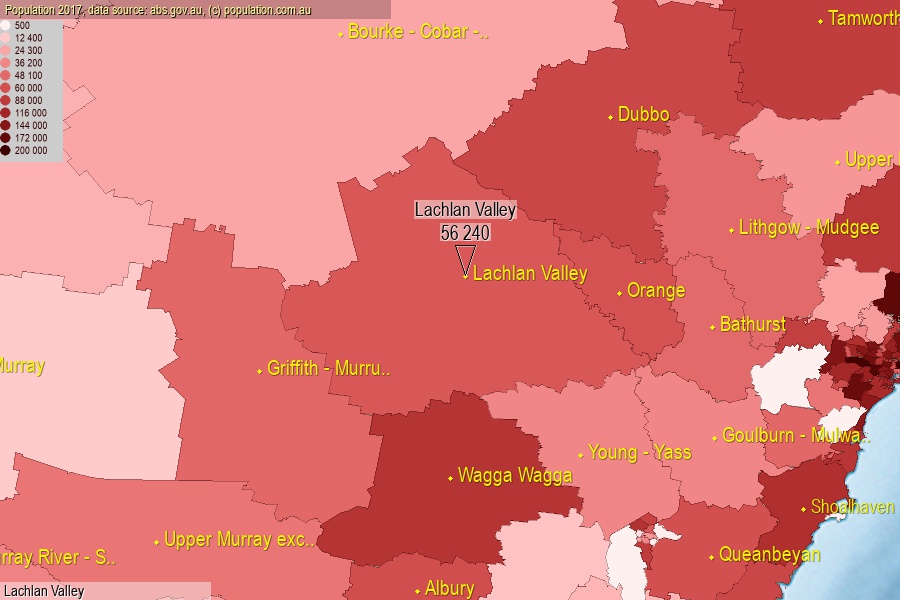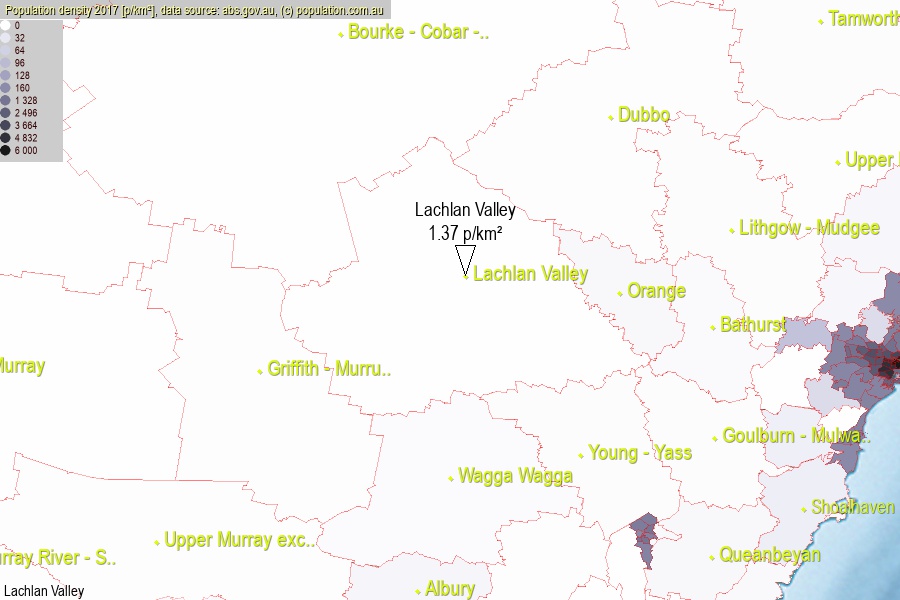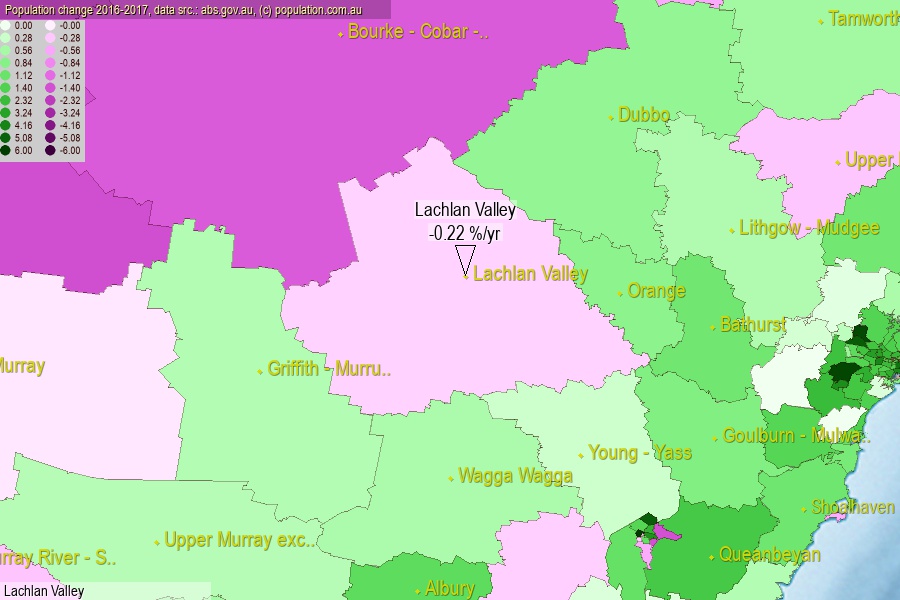 population.com.au
population.com.auLast official estimated population of Lachlan Valley (as Statistical Area Level 3) was 56 240 people (on 2017-06-30)[2]. This was 0.23% of total Australian population and 0.707% of NSW population. Area of Lachlan Valley is 41 000.00 km², in this year population density was 1.37 p/km² . If population growth rate would be same as in period 2016-2017 (-0.22%/yr), Lachlan Valley population in 2025 would be 55 266. [0]



Click to enlarge. Lachlan Valley is located in the center of the images.
Population [people], population density [p./km²] and population change [%/year] [2]
View borders » (new window) [4]
[1991-1992] +0.32 %/Y
[1992-1993] -0.30 %/Y
[1993-1994] +0.00 %/Y
[1994-1995] -0.64 %/Y
[1995-1996] -0.45 %/Y
[1996-1997] -0.13 %/Y
[1997-1998] -0.10 %/Y
[1998-1999] -0.16 %/Y
[1999-2000] -0.24 %/Y
[2000-2001] -0.04 %/Y
[2001-2002] -0.63 %/Y
[2002-2003] -0.97 %/Y
[2003-2004] -1.12 %/Y
[2004-2005] -0.75 %/Y
[2005-2006] -0.52 %/Y
[2006-2007] -0.42 %/Y
[2007-2008] -0.39 %/Y
[2008-2009] +0.04 %/Y
[2009-2010] +0.28 %/Y
[2010-2011] +0.26 %/Y
[2011-2012] -0.04 %/Y
[2012-2013] 0.00 %/Y
[2013-2014] -0.02 %/Y
[2014-2015] -0.14 %/Y
[2015-2016] -0.12 %/Y
[2016-2017] -0.22 %/Y
[0] Calculated with linear interpolation from officially estimated population
[1] Read more about SA3 and Australian Statistical Geography Standard (ASGS) on abs.gov.au
[2] Population data from Australian Bureau of Statistics (Population and density: 2017; change: 2016-2017)
[3] Digital Boundaries: Australian Statistical Geography Standard (ASGS) 2016.
[4] Border coordinates are simplifyed using Ramer-Douglas-Peucker algorithm.